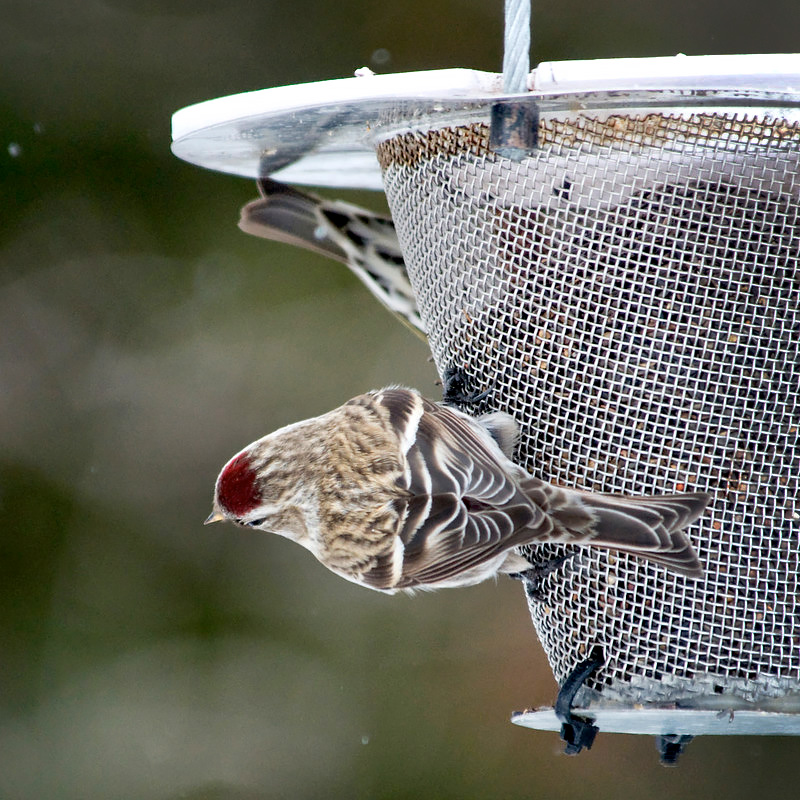

Feed the Birds — The Hows and Whys

One of winter's many pleasures is seeing a male northern cardinal, decked in bright red plumage, feasting on seeds from your snow-covered feeder. Indeed, one of the main reasons humans feed birds is to experience nature's beauty right outside their door.
Feeding the birds can be as simple as tossing some cracked corn on the ground or as elaborate as hanging various types of feeders (suet cages, thistle socks, thistle feeders, sunflower feeders) and filling them with different kinds of food that attract different species.
Before you start buying feeders and seeds, keep in mind some basic concepts that will make you and the birds happy:
- Though birds are intelligent enough not to rely on only your feeders for sustenance, it's a good idea to keep the feeders filled as much as you can until middle to late spring. In fact, early spring, when last fall's seeds are all gone and the insects haven't yet started to emerge, is often the most difficult time for birds to find food. However, don't worry about leaving for a week or so on vacation. Just fill the feeders full when you leave and stock them again when you return.
- Choose individual foods such as thistle seeds, sunflower oilers, or suet cakes rather than mixes. You'll have better luck, less waste, and often, less mess.
- Keep your feeders clean. Moldy seeds can sicken birds as well as humans who touch the seeds. You may have to occasionally wash the feeders with soap and water, dry them, and then rehang.
- If you're just starting, be patient. Birds don't always flock to your feeders the moment you open up shop. It may take up to a week or longer for certain birds to find this new food source. Remember, they don't rely on only one single food source; yours will need to become part of their daily route.
- Supplemental bird food doesn't just attract our beautiful birds; it also attracts other creatures including squirrels and raccoons, and such nuisance birds as nonnative European starlings and house sparrows. There are things you can do to deter these unwanted guests, but you'll probably never be fully rid of them. Take that into consideration as you plan your feeders. It's not fair to invite creatures into the yard and then chase away the ones you don't want.
- Native plants go a long way toward feeding the birds. Various shrubs, trees, and wildflowers provide nourishment and shelter for a variety of birds.
- Water is just as important for birds as is food. Heated birdbaths can help keep avian creatures healthy in winter.
Feeder Types
Many types of feeders exist. Here are the three most common that will attract a variety of birds:
- A suet cage filled with a suet cake attracts woodpeckers, chickadees, and nuthatches.
- A hopper-style feeder filled with sunflower seeds will attract cardinals, chickadees, blue jays, house finches, nuthatches, and others. Try to find one with a squirrel baffle and place it where squirrels can't jump on top of it and wreak havoc. Just remember, squirrel baffles are not necessarily squirrel-proof.
- A thistle feeder has tiny holes so that goldfinches and other small, thin-billed birds such as siskins can get some nourishment, while the larger-billed birds can't.
Common Backyard Birds and their Food Preferences
Here's a list of birds that will visit your yard, and their preferred foods.
 |
American goldfinch —Bright gold with dark wings in summer, the male American goldfinch looks rather drab in the winter. But this bird's perchickoree song brightens a winter's day, and it seems they are always hungry for thistle seeds. A special feeder made just for goldfinches has thin holes just big enough for the birds to get their beaks in and snatch a seed. That keeps the bigger birds away. |
 |
Black-capped chickadee —This charming ball of fluffy black and white adds cheer to many a winter garden. Chickadees will eat sunflower seeds, suet, and peanuts. Watch them as they take turns snatching seeds from the feeder. It's only one chickadee at a time on the feeder and the leader of the pack gets to go first. Chickadees stash seeds in crevices to eat later. Their ability to store food and rediscover their pantries later helps them survive the winter. |
 |
Blue jay —These birds can be scarce in winter if their favorite winter food—acorns—isn't plentiful. But they will eat sunflower seeds as well as cracked corn and peanuts. Though considered to be gregarious, blue jays tend to be shyer around gardens than other birds. They are among the first to fly away when disturbed. |
 |
Dark-eyed junco —Another winter visitor, the dark-eyed junco prefers feeding on the ground, snatching cracked corn and thistle and sunflower seeds dropped below feeders. |
 |
Northern cardinal —These year-round beauties frequent suburban and urban gardens, especially when sunflower oilers or striped sunflowers are offered. If you want less mess (the birds crack open the seeds to get to the inside morsels), try offering shelled sunflowers—they're more expensive, though. Cardinals are often the last birds at dusk and the first at dawn to visit feeders. |
 |
Pine siskin —A winter visitor, the pine siskin looks like a goldfinch, but has thin streaks all over its body and very thin bills. This bird will come to thistle feeders and mingle with the goldfinches. |
 |
White-breasted nuthatch —Nuthatches can go up and down a tree head first, enabling them to get at morsels other critters can't. Their favorite feeder foods are sunflower seeds and suet. |
 |
Woodpeckers —Three types of woodpeckers hang around feeders in northern Illinois in winter—the downy, the hairy, and the red-bellied. The most common is the downy. Woodpeckers are adept at finding dormant larvae and insect eggs in the crevices of tree bark. Their long, sticky tongues snatch up the critters other birds can't get. Woodpeckers readily come to suet feeders and peanut feeders. A suet cage hanging far from a squirrel's grasp will be no problem for a woodpecker that can cling to the feeder with its strong feet. |
The Cooper's Hawk Dilemma
Once an endangered species in Illinois, the Cooper's hawk has increased in numbers thanks to the banning of the chemical DDT, which caused eggshells to thin and fewer young to hatch. Those who feed birds, however, now have to be ready for the occasional Cooper's hawk raid. By feeding the songbirds, you may attract their predators, which include Cooper's hawks. This phenomenon is part of the natural food chain, and over time you will learn to enjoy seeing Cooper's hawks visit your yard. Remember: native birds are protected by law.

